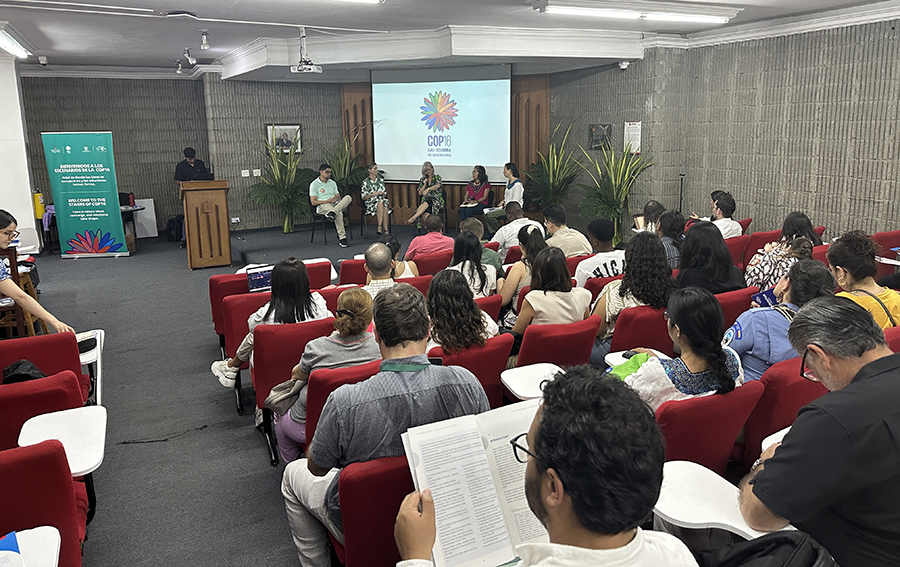Violent conflict is a significant threat to both food security and biodiversity, according to SIANI’s expert group Land Rights in Latin America. The group recently held a side event on the topic at the UN Biodiversity Conference COP16 after which the group’s Caroline Delgado appeared in a popular podcast from the daily El Tiempo in Colombia.
SIANI’s expert group on land rights, with members in ten Latin American countries, decided to use COP16 in Cali, Colombia, to raise awareness of the strong links between violence, land use, food and biodiversity. With support from SIANI, the group held a well-attended side event where they shared experiences from Latin America, the most dangerous region for environmental defenders.
Ruth Alipaz Cuqui, leader of the Uchupiamona people and of the National Coordinating Body for the Defense of Indigenous-Campesino Territories and Protected Áreas in Bolivia, described the situation in her home country, where, in her view, mining for gold has become the country’s most deadly weapon. The consequences are dramatic and long-lasting, with poisoned land and water resources damaging the food security, health and lifestyles of local communities.
Dr. Caroline Delgado from SIPRI emphasised the connection between biodiversity loss and violence:
“The relationship between armed conflicts and biodiversity goes both ways – conflicts increase biodiversity loss and biodiversity loss can drive conflict.”
Eighty percent of armed conflicts occur in biodiversity hotspots and competition over natural resources is often a driver of internal conflicts. The problem looks set to worsen in the next few years – demand is growing for natural resources at a time when many ecosystems are seriously degraded, partly due to climate change.
The expert group has explored the situation in more detail in a report and an annex, highlighting the role of economic models. In Latin America, much of the economy is centred around extractivism, mining and large-scale agroindustry, often at a high price for the environment and local communities. The model is not viable in the long term, but weak institutions, corruption, violence and rampant inequality make it difficult to shift course. Yet, it is possible to develop a more sustainable alternative, and the report showcases what this could look like.

